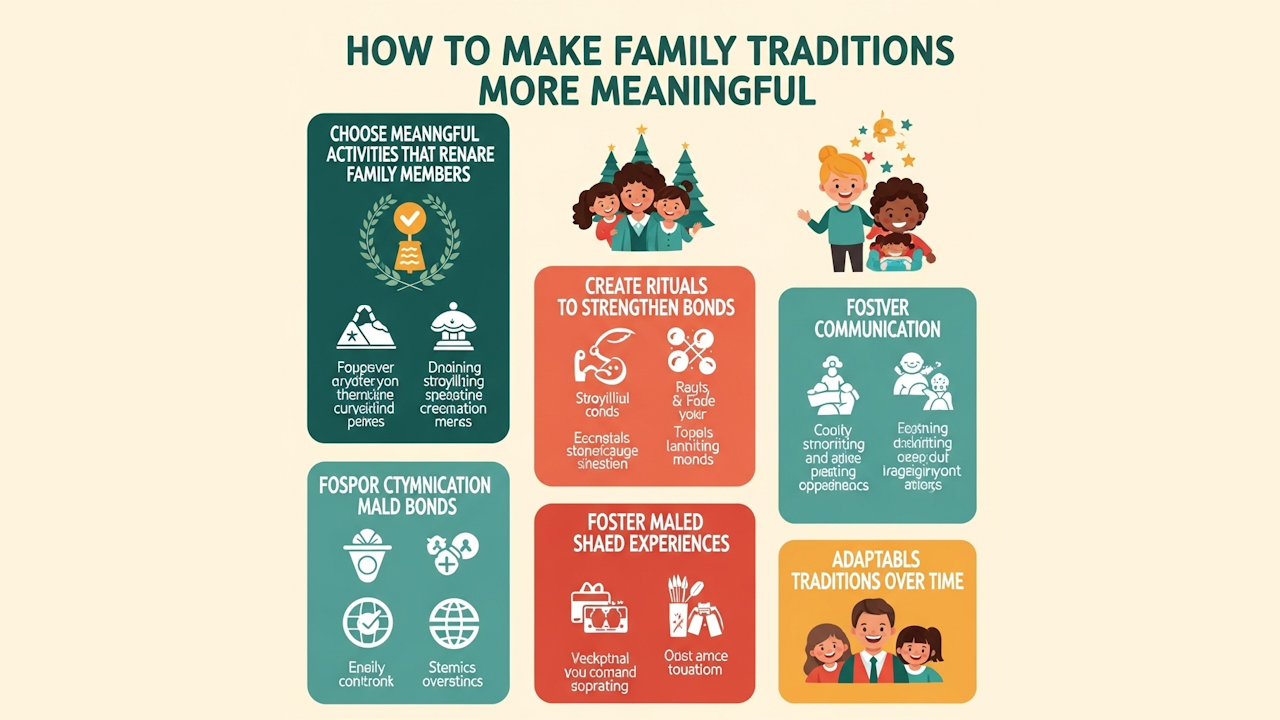Family traditions are more than just routines; they are the threads that stitch generations together, forming a tapestry of shared values, stories, and love. Whether it’s Sunday dinners, holiday rituals, birthday celebrations, or summer road trips, these traditions create a sense of identity and belonging. However, over time, traditions can become routine or feel obligatory. When this happens, they may lose their emotional impact. Fortunately, with some intentionality and creativity, families can breathe new life into old customs and make them more meaningful for everyone involved.
Start With the “Why”
One of the first steps in making family traditions more meaningful is to reconnect with their original purpose. Ask yourself and your family, Why do we do this? Traditions often begin with a heartfelt intention—perhaps to celebrate togetherness, honor a family member, or preserve cultural heritage. Revisiting the “why” helps refocus attention on the deeper significance rather than just the motions of the event. If the original purpose no longer resonates, it’s perfectly fine to adapt the tradition or create a new one that better aligns with the family’s current values.
Make Room for Everyone’s Voice
To keep traditions alive and relevant, include everyone in the planning and execution process. Children, teenagers, and even extended family members will feel more connected if their opinions and ideas are valued. Encourage each person to share what aspects of a tradition they love and what they might like to change or add. This kind of collaboration not only increases engagement but also fosters a sense of ownership and pride in the family’s shared customs.
Add a Personal Touch
Sometimes all it takes to deepen a tradition is a small, thoughtful twist. Maybe it’s writing handwritten notes to each other during holiday gatherings, creating a family gratitude jar, or baking a specific dish that holds sentimental value. Personal touches—especially those tied to individual family members’ stories or interests—create emotional resonance. For example, instead of a generic birthday celebration, include a storytelling session where family members share favorite memories about the birthday person. These moments not only personalize the tradition but also reinforce family bonds.
Create Opportunities for Reflection
Moments of reflection can transform even the simplest traditions into meaningful experiences. After a holiday meal, consider going around the table to share one lesson learned during the past year. During a family vacation, set aside time to talk about favorite experiences or what everyone is most grateful for. Adding reflection helps individuals pause, take stock of their lives, and appreciate the tradition in a deeper way. It can also help younger family members understand the significance behind what might otherwise feel like an arbitrary practice.
Honor the Past While Embracing the Present
Many family traditions are rooted in cultural or religious history. One way to add meaning is by learning more about the origins of a tradition and sharing that knowledge with younger generations. At the same time, be open to modifying old customs to suit the modern context. For example, if your family’s traditional recipes are no longer compatible with dietary needs, explore ways to adapt them without losing their essence. Balancing respect for the past with an openness to change ensures that traditions remain both respectful and relevant.
Make Traditions Acts of Service
Integrating acts of kindness or community service into family traditions can be incredibly powerful. This could be volunteering at a food bank before Thanksgiving dinner, baking cookies for neighbors during the holidays, or organizing a family fundraiser for a cause close to your hearts. These experiences not only reinforce the value of giving back but also offer shared emotional experiences that go beyond surface-level celebration.
Use Storytelling as a Bridge
Storytelling is one of the most effective ways to infuse traditions with meaning. Share family histories, tales of ancestors, or funny anecdotes that have become legendary over the years. Encourage grandparents and older relatives to pass down stories that explain why certain customs exist or how they came to be. This oral history fosters connection and helps family members see themselves as part of something larger—an ongoing narrative that transcends time.
Make Space for Change
As families grow and evolve, so should their traditions. Clinging to rituals that no longer fit the family’s dynamics can create stress or resentment. Instead, embrace flexibility. Maybe a long-standing Sunday dinner shifts to brunch to accommodate new schedules, or maybe you create space for chosen family and friends who have become part of your circle. Letting go of rigidity doesn’t mean abandoning tradition—it means making room for new chapters that honor the spirit of the old.
Capture the Moments
Finally, take time to document family traditions. Whether it’s through photos, video recordings, journals, or scrapbooks, capturing the joy, laughter, and even the chaos of family events helps preserve their meaning for future generations. Revisiting these memories can reignite appreciation and serve as a reminder of why these rituals matter in the first place.
Making family traditions more meaningful is not about perfection—it’s about presence, purpose, and participation. By thoughtfully engaging with our rituals and infusing them with intention, we transform them into cherished experiences that bind us closer together. After all, it’s not the tradition itself that holds the power—it’s the love, connection, and memories we build within them.

